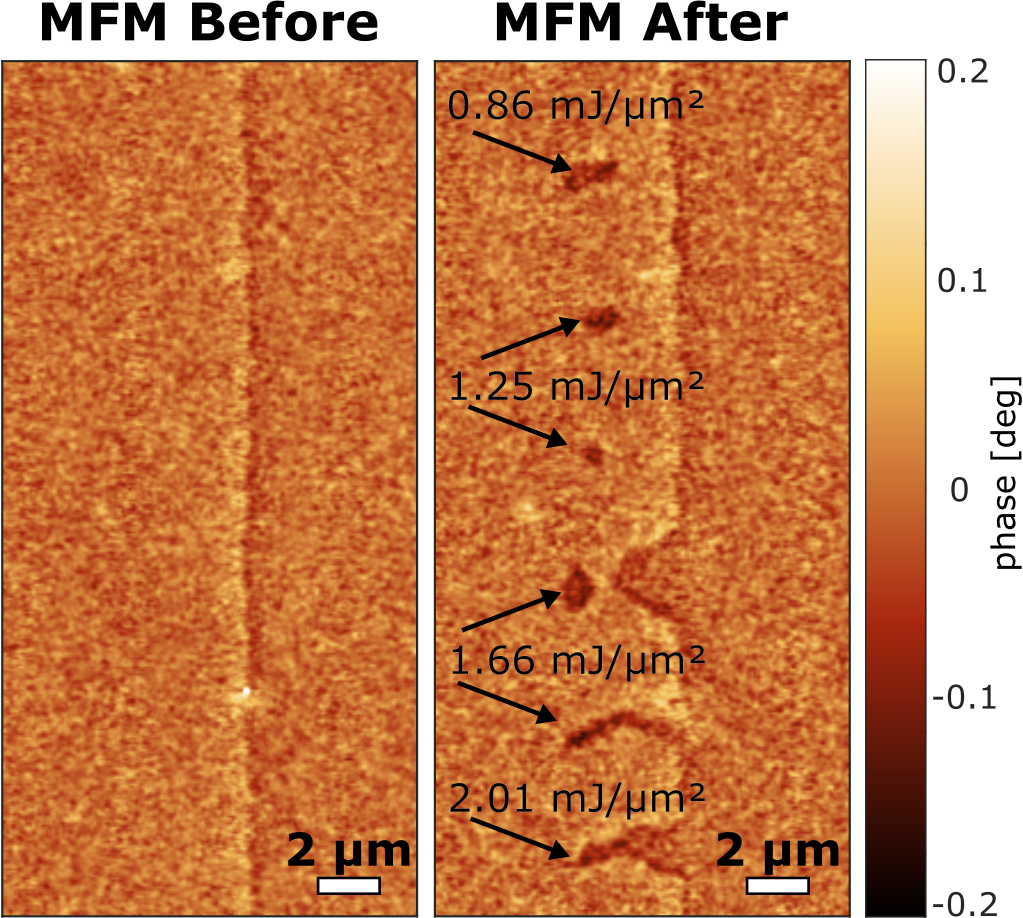
In this project we are investigating the influence of thermal gradients on magnetic structures. It was predicted by various authors e.g. [1], that a magnetic domain wall should interact with a heat source by means of the thermal gradient and the resulting spin waves (magnonic spin seebeck effect). Therefore, a magnetic domain wall should feel attracted by a heating site in order to minimize its internal free energy.
In order to apply such a thermal gradient, we are using a continuous wave laser which is focused down onto the sample creating a localized thermal gradient (depicted in the sketch below). As samples we use Terbium-Iron thin films. These rare-earth-transitions metal alloys are produced by our cooperation partners in Augsburg.

Our prime measurement method is magnetic force microscopy (MFM). This method is used to investigate the changes caused by laser illumination, by comparing the domain wall shape before and after laser heating.
By moving our laser spot into the vicinity of a magnetic DW we are now able to study the DW motion properties of our sample. The depicted measurement (MFM Before & After) shows, that there is a specific laser fluence necessary to get a domain wall depinned and moving.
With the help of finite element simulations we can estimate the temperature rise due to the laser illumination and thereby calculate a thermal gradient. The thermal gradient can be controlled by the size of the focal spot and the incoming laser power.
[1] Hinzke, D. and U. Nowak (2011). "Domain Wall Motion by the Magnonic Spin Seebeck Effect." PRL 107(2).
Publications
Stark, M., et al. (2015). "Controlling the magnetic structure of Co/Pd thin films by direct laser interference patterning." Nanotechnology 26(20): 205302.
Information
Contributors: Philipp Graus
Former contributors: Martin Stärk, Lukas Irmler
External cooperations: University of Augsburg, Uni Konstanz (AG Nowak)
Fundings: SFB767-C11
Period: since 2012
